Are pests making your greenhouse or shed an unwelcome refuge? Maintaining your outbuildings free of pests can seem like an ongoing struggle whether you are dealing with wasps nesting under overhangs or mice sneaking in through little holes. Fortunately, you can keep these pesky visitors off your shed using the correct techniques. We’ll walk you through how to keep mice out of the shed and other pests from settling in.
Table of Contents
How to keep mice out of the shed
Mice are resourceful animals that can squeeze through even the smallest openings to enter sheds. Once inside, they can chew through stored items and wood, causing serious damage. They pose a health risk since they also carry diseases. When it comes to keeping mice out of your shed, prevention is vital, and there are a number of practical ways to do this.
- Seal all entry points – The first step is to check your shed for possible entry points, as mice can fit through holes as small as a pencil. Look closely for any cracks or breaches in the floor, walls, roof, and door frames. Mice cannot chew through materials like caulk or expandable foam, so use them to seal minor openings and steel wool or wire mesh for larger holes. Because these are frequent access locations, pay close attention to the places where cables or pipes enter the shed.
- Keep your shed clean and organised – Mice have plenty of hiding places to build their nests in a cluttered shed. Remove anything you don’t need from your shed and put the rest in airtight plastic containers to declutter it. Avoid leaving stacks of paper, cardboard, or wood since mice love these materials for their nests.
- Remove food sources – Food attracts mice, so be sure your shed isn’t drawing them in. Store birdseed, cat food, or other foods in your shed in airtight metal or thick plastic containers. Right away clean any spills; avoid keeping fruit or vegetables in your shed for long lengths of time.
- Use natural scents to deter mice – Peppermint and chilli oil, mothballs, cloves and cayenne pepper, all repel mice. You can also put some used cat litter in a corner. It doesn’t sound too pleasant, but it’s positively threatening to the mice, which won’t enter for fear of a cat.
- Use mothballs to keep mice out of your shed – Another great approach to discourage mice is mothballs as they smell strong and rodents find them unbearable. Put mothballs around kept goods, near doors and in corners. Still, one ought to use them sensibly. Keep mothballs out of reach for kids and animals since they include compounds that, in big doses, could be dangerous for consumption or inhalation.
- Wash away scent trails – Mice leave smell trails leading other mice to their location. Wash the inside of your shed with water and bleach or a strong disinfectant mixture to stop this cycle. Along with removing the scent traces, this kills germs and other pollutants the mice left behind.
- Attract natural predators – If you’re willing to welcome animals into your yard, drawing natural predators like owls will help to regulate the mouse count. One excellent approach to attract these useful birds to dwell close by in your garden is to install an owl box. A pet cat can also be a useful deterrent for a more hands-on option; nevertheless, keep in mind that keeping a pet is a lifetime commitment.
These techniques taken together will help you keep mice out of your shed and guard your possessions from damage. See a mice control specialist to fully handle the issue if the infestation lasts despite your best efforts.
Check also: How to Get Rid of Mice in Your House
How to keep spiders out of your shed
If you see a spider in your shed during the day, the odds are that it’s not going to be a dangerous one. The risk comes from the dark, hidden corners, empty boxes and the like. Because here, dangerous spiders who prefer the darkness like to lurk.
Unfortunately, your shed can be a major source of dark corners and hidden spaces. This means a little spider-proofing can go a long way to deter spiders from entering.
How to make a spider-proof shed
Figuring out how to keep spiders out of your shed takes a little bit of planning and some materials:
- Seal entrance points – Those spiders are getting in from somewhere. Check your shed door, windows, walls and roof for any holes or cracks they could be entering through. Fit weatherstrips to the door and use caulk to seal any holes. If you regularly leave the window open, get a screen.
- Have a clear out – Is your shed a little untidy? That mess will make it all the more difficult to manage the problem, as well as give your unwanted guests more places to hide. Declutter your shed and remove any empty containers. Then, vacuum your shed in case there are any eggs, hidden spiders or insects that might seem like a good spider meal.
- Check before you store stuff away – Always check for eight-legged hitchhikers before returning tools to your shed.
- Store smart – Seal empty containers and store them with space between them and the walls to make it more difficult for spiders to hide.
- Change your bulbs – Got lights around your shed? And regularly see insects around them? They’re the perfect bait for spiders. Replace your bulbs with sodium vapour or yellow bulbs to keep spiders out of your shed.
Check also:
What Attracts Spiders in Your House
How to Spot a False Widow Spider
How to keep wasps out of the shed
First things first. If what you have is a hornet problem, you need professional pest removal experts to take care of it. Hornets are much larger than wasps, so you should be able to identify them easily.
When you want to keep wasps out of your shed, try:
- Wasp proofing – Use caulk to seal any holes or cracks that might allow wasps to enter. Consider hanging mesh or wire screening across the possible nest sites like overhangs.
- Remove food sources – Fallen fruit, BBQ remnants or sugary drinks that have been left unattended attract wasps that can then sneak into your shed. So, be sure to get rid of any food sources fast after you’re done with it to deny wasps the sweet things they love. Keep your lawn clear of rotting fruit, as well.
- Eliminate the pheromones – Wasps usually only use the same nest for one year. Once they’re gone, remove the nest as it signals to other wasps that this is a great place to live via pheromones the previous occupants leave behind. After you’ve removed the nest, give the area a proper scrub with soapy water to eliminate the pheromones.
- Get rid of ground holes and piles of wood – If you leave piles of logs or debris around, you are asking for wasps to move in. Some species also like living in holes in the ground, so cover them up when you find them.
- Try artificial prevention or natural protection – You can buy wasp traps and even fake nests to deal with the problem. Also, wasps hate strong scents. Plants that keep spiders away, like lemongrass and spearmint, also do a great job of putting off wasps. You might also try eucalyptus, citronella or thyme. Mothballs also work for the same reason.
Check also: How to Get Rid of a Wasp’s Nest
Are you dealing with a pest infestation?
You don't have to be alone in the battle against pests. Hire a professional pest expert!
Call usAnimals that live under sheds – the signs
If you’re concerned that you are dealing with one of the many types of animals that live under sheds, there are a few signs to watch out for.
Actually, seeing them is the first and most obvious one. Motion sensor cameras can help you spot nighttime visitors, too. Another common sight is damage like gnawed wood, vegetables that have been snacked on or holes in the ground.
You might also be able to spot paw prints, droppings and other signs of unwanted animals’ presence. Try dusting a little sand around the area if you want to make spotting tracks easier.
How to keep animals out from under your shed
When it comes to how to keep animals out from under your shed, there are a few ways to go about it. Trap and release methods rarely deliver good results for you or the animal in question. If you want to humanely remove animals living under your shed, call in a professional. Or you can try:
- Making some noise – Leave a radio playing under your shed or find some other way of generating noise that stops that place from sounding so inviting to visitors!
- Using some light – Similarly, that dark, sheltered place will look less appealing if you can get some strobing or flashing light in there.
- Utilising the power of smells – Apple cider vinegar and other strong-smelling solutions can drive off pests. Try to spot the kind of pest you are dealing with to make sure you can find something they don’t like.
On top of these humane removal and repellent methods, you can keep other animals out from under your shed by answering some basic questions about how it is constructed.
How high should a shed be off the ground?
It’s generally suggested that a shed should be at least 4 inches (10 cm) off the ground to allow air to circulate. If you live in an area with soft soil or heavy rainfall, you might want to up this slightly. But you don’t want to raise it by too much more as this can lead to instability.
Unfortunately, this is the ideal height for some animals to find the space under the shed appealing.
How to fill gaps in a wooden shed
Filling up entry points in sheds is the best way to keep any pests out. Here’s how to fill gaps in a wooden shed if needed:
- Keep insects out – The task can usually be accomplished with wood sealant, caulk or expandable foam. Another option is placing rubber strips or weather strips.
- Keep mice out – Mice can usually chew through rubber strips. Some people suggest putting down an extra layer of plywood to keep them out.
How to get animals out of walls
Getting animals out of walls really is a job for professionals. You can take some of the steps above to remove things like sources of food or easy access points to stop them from coming back. But the actual removal really needs an expert hand.
How to control greenhouse pests
Control methods for greenhouse pests vary by type. For instance, when it comes to aphids, spotting the problem early and then washing them away with water is best. In fact, it’s a good idea to wash and clean everything that goes into your greenhouse to remove any bugs that may be present.
You can also use beneficial insects like ladybugs (ladybirds) or lacewings, as they naturally eat the insects that prey on your greenhouse plants.
Other methods are related to controlling the greenhouse environment. Some pests will like a dry greenhouse, which means keeping yours properly humid is the best defence you can have.
Common greenhouse pests
Some of the most common greenhouse pests include:
- Aphids
- Thrips
- Gnats
- Red spider mite
- Whiteflies
Takeaways
- It’s a good move to put preventative measures in place before you even notice pests.
- Safe and full pest removal is often a job for the experts, especially if you have major infestations or issues with wild animals on your hands.
- Cleaning out your shed to remove dark and hidden corners is step one in any shed spider-proofing attempt.
- Consider planting plants that spiders and other insects dislike as a natural repellent.
- Removing sources of food is important so as not to attract all kinds of pests.
Need to know more about preventing pests from entering your shed or greenhouse?
Are you dealing with a pest infestation?
You don't have to be alone in the battle against pests. Hire a professional pest expert!
Call usComment below and get some friendly advice. Alternatively, book our pest control services online or by directly speaking to an expert about your garden shed pest problem, which will be professionally taken care of for you.
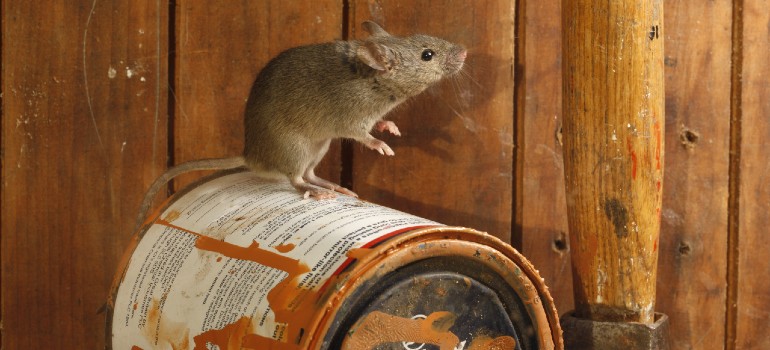

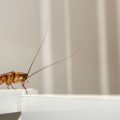


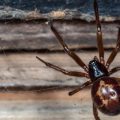
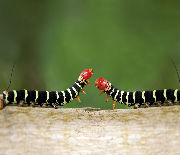
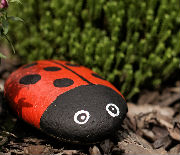
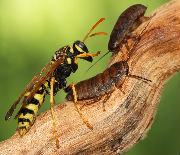
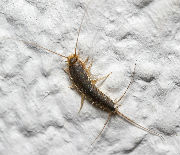
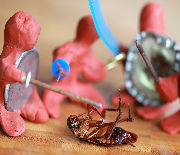
Leave a Reply